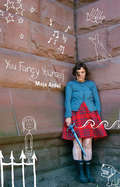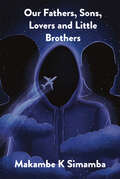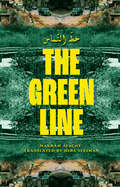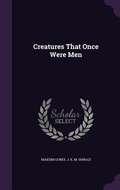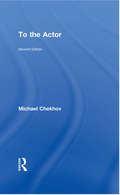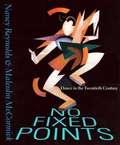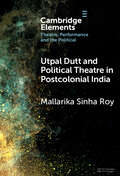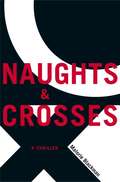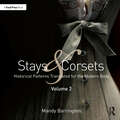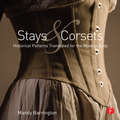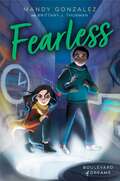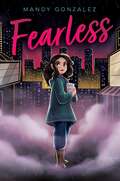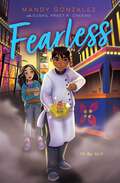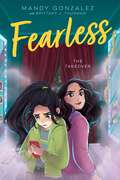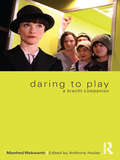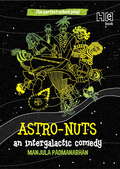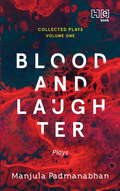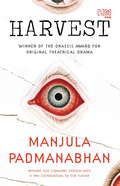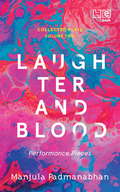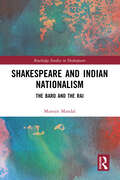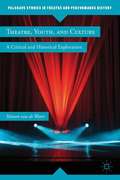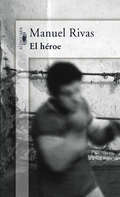- Table View
- List View
You Fancy Yourself
by Maja ArdalWhen Elsa and her family move from Iceland to Scotland, she is filled with uncontrollable joy over the new adventure she is about to begin. With her infectious energy and love for the dramatic, Elsa stands out both in her community and within her classroom, but this exuberance also targets her as an outcast. Only through the faith of a new friend and the strength of her imagination does Elsa find the courage to look inside herself and find pride in who she is and where she came from. Through her vivid characters Maja Ardal depicts Scotland in the 50s as a place of hope and harsh discrimination for immigrants.
Our Fathers, Sons, Lovers and Little Brothers
by Makambe K SimambaSlimm, a seventeen-year-old Black boy in a hoodie suddenly finds himself in the first moments of his afterlife. He calls out for God. God does not respond. What happens next is a sacred journey through the unknown, as Slimm grapples with the truth of the life he lived and the death he didn’t choose. Our Fathers, Sons, Lovers and Little Brothers is a protest for all Black life beyond headlines and hashtags, a prayer for all families left behind, and a promise to the community that all Black lives matter.
The Green Line | خطّ التماس
by Makram AyacheA poetic, heartbreaking story of intergenerational queer history in Lebanon, The Green Line weaves together civil war Beirut with a contemporary nightclub, following one family’s journey to discover their past.In the present day, Rami, a twentysomething queer Lebanese Canadian, has returned to the Lebanese mountains to bury his father. To cope with the weight of his grief, Rami, carrying a necklace in the shape of a phoenix left to him by his father, finds himself in a queer Beirut nightclub, where he catches the attention of a powerful drag queen named Fifi, who just so happens to be dressed as a phoenix.In 1978, in the midst of the Lebanese Civil War, Naseeb is attempting to get himself and his sister Mona out of Beirut and into the safety of the mountains. Mona, however, is secretly in love with her classmate, a woman named Yara, and refuses to leave the city. When Naseeb becomes swept up with the descending political culture of the war around him, he creates a rift between himself and Mona greater than the line that divides the country itself.
Creatures That Once Were Men
by Maksim GorkyA collection of short stories by the popular and influential Russian author, a founder of the socialist realism literary method and arguably the greatest Russian literary figure of the 20th century. He wrote stories, plays, memoirs and novels which touched the imagination of the Russian people, and was the first Russian author to write sympathetically of such characters as tramps and thieves, emphasizing their daily struggles against overwhelming odds.
To the Actor: On the Technique of Acting
by Michael Chekhov Mala PowersMichael Chekhov's classic work To the Actor has been revised and expanded by Mala Powers to explain, clearly and concisely, the essential techniques for every actor from developing a character to strengthen awareness. Chekhov's simple and practical method – successfully used by professional actors all over the world – trains the actor's imagination and body to fulfill its potential. To the Actor includes a previously unpublished chapter on 'Psychological Gesture', translated into English by the celebrated director Andrei Malaev - Babel; a new biographical overview by Mala Powers; and a foreword by Simon Callow. This book is a vital text for actors and directors including acting and theatre history students.
No Fixed Points: Dance In The Twentieth Century
by Nancy Reynolds Malcolm McCormickThis book chronicles one hundred years of dramatic developments in ballet, modern, and experimental dance for stage and screen in Europe and North America. The volume is magisterial in scope, encompassing the history of theatrical dance from 1900 through 2000. Beginning with turn-of-the-century dancer-choreographers like Loie Fuller, Isadora Duncan, Michel Fokine, and a bit later Vaslav Nijinsky, and proceeding through the profusion of dance styles performed today, the book provides an unparalleled view of dance in performance as it changed and grew in the twentieth century. Nancy Reynolds and Malcolm McCormick set dance in broader cultural and historical contexts, examine specific dance works, and explore the contributions of outstanding choreographers, performers, visual artists, impresarios, composers, critics, and other figures. They discuss the breakaway barefoot dance of the early 1900s and demonstrate its links with later forms and styles. With unusual detail, fascinating illustrations, and wide-ranging insights, this book is an indispensable guide to the transformations in the dance scene of the twentieth century.
Utpal Dutt and Political Theatre in Postcolonial India (Elements in Theatre, Performance and the Political)
by Mallarika Sinha RoyAmong the most significant playwrights and theatre-makers of postcolonial India, Utpal Dutt (1929–1993), was an early exponent of rethinking colonial history through political theatre. Dutt envisaged political theatre as part of the larger Marxist project, and his incorporation of new developments in Marxist thinking, including the contributions of Antonio Gramsci, makes it possible to conceptualise his protagonists as insurgent subalterns. A decolonial approach to staging history remained a significant element in Dutt's artistic project. This Element examines Dutt's passionate engagement with Marxism and explores how this sense of urgency was actioned through the writing and producing of plays about the peasant revolts and armed anti-colonial movements which took place during the period of British rule. Drawing on contemporary debates in political theatre regarding the autonomy of the spectator and the performance of history, the author locates Dutt's political theatre in a historical frame.
Naughts and Crosses
by Malorie BlackmanCallum is a naught, a second-class citizen in a society run by the ruling Crosses. Sephy is a Cross, and daughter of the man slated to become prime minister. In their world, white naughts and black Crosses simply don't mix -- and they certainly don't fall in love. But that's exactly what they've done. When they were younger, they played together. Now Callum and Sephy meet in secret and make excuses. But excuses no longer cut it when Sephy and her mother are nearly caught in a terrorist bombing planned by the Liberation Militia, with which Callum's family is linked. Callum's father is the prime suspect...and Sephy's father will stop at nothing to see him hanged. The blood hunt that ensues will threaten not only Callum and Sephy's love for each other, but their very lives.In this shocking thriller, UK sensation Malorie Blackman turns the world inside out. What's white is black, what's black is white, and only one thing is clear: Assumptions can be deadly.
The Hunchback of Notre Dame (Adapted)
by Victor Hugo Malvina G. VogelThis novel has been adapted into 10 short chapters that will excite the reluctant reader as well as the enthusiastic one. Key words are defined and used in context. Multiple-choice questions require the student to recall specific details, sequence the events, draw inferences from story context, develop another name for the chapter, and choose the main idea. Let the Classics introduce Kipling, Stevenson, and H. G. Wells. Your students will embrace the notion of Crusoe's lonely reflections, the psychological reactions of a Civil War soldier at Chancellorsville, and the tragedy of the Jacobite Cause in 18th Century Scotland. In our society, knowledge of these Classics is a cultural necessity. Improves fluency, vocabulary and comprehension.
Stays and Corsets Volume 2: Historical Patterns Translated for the Modern Body
by Mandy BarringtonIn this second volume of Stays and Corsets, Mandy Barrington continues to create historical patterns for a modern body shape. This book contains all new corset patterns with a range of silhouettes that span over 300 years, from the late 16th century to the early 20th century. The corset patterns are generated from an original historical garment and have been designed for a wide range of female figures and sizes. The technique of flat pattern drafting your stays or corset will enable you to change the shape of the wearer to create an authentic historic silhouette. All calculations have been worked out for the reader and are provided in easy-to-read tables, which avoids extremely difficult, time-consuming and inaccurate re-sizing of historical patterns. Some prior knowledge of pattern drafting is helpful; however, each pattern has step-by-step instructions supported by clear diagrams that will take you through each stage of the pattern drafting process. The final result is an accurate period stays or corset pattern for your model.
Stays and Corsets: Historical Patterns Translated for the Modern Body
by Mandy BarringtonStays and Corsets: Historical Patterns Translated for the Modern Body goes a step beyond traditional historical costuming texts by not only providing you with historical pattern diagrams and information, but by showing you how to adapt these patterns to the contemporary body shape. Using her original pattern-drafting system, author Mandy Barrington will show you how to draft a historical pattern for a modern body shape, while still retaining an accurate historical silhouette. Each pattern has been generated from an original stay, corset, or pattern taken from a historical garment. The instructions to follow these new patterns are designed to accommodate any size of female figure, allowing you to avoid extremely difficult, time consuming, and inaccurate historical pattern re-sizing Requiring only basic prior knowledge of pattern drafting, all calculations have been worked out for the costume maker and are provided in simple tables accompanied by easy-to-read, step-by-step diagrams that clearly show how the historical pattern is plotted onto the female basic block, coupled with photographs of the constructed stays and corsets.
Boulevard of Dreams (Fearless Series #2)
by Mandy GonzalezBetter Nate than Ever meets Love Sugar Magic in this spooky second novel in the Fearless middle grade series from Hamilton and Broadway star Mandy Gonzalez about a group of young thespians who time travel back to 1950s Broadway.Twelve-year-old Relly can&’t wait for his beloved grandfather to finally see him on stage! Along with the rest of the Fearless Squad, Relly has just opened Our Time, a brand-new musical at the infamous Ethel Merman Theater. Though his grandfather would prefer his grandson pursue something more &“practical,&” Relly just knows when he sees the show, he will change his mind and come around on Relly&’s love of theater and dance. But right before their night show, a member of the Squad loses their phone down an open manhole. When the entire Squad goes down to help retrieve it, they find themselves in 1950s Manhattan. A big problem, considering the curtain goes up in about two hours—and over sixty years in the future! With a series of clues, Relly discovers that his grandfather was a popular tap dancer, working the nightclub circuit and pursuing his dream of performing—something he&’s been discouraging Relly from doing lately. Perhaps this accidental fall into a different time wasn&’t so accidental after all. Can Relly help his grandfather and make it back in time for places in the show?
Fearless (Fearless Series #1)
by Mandy GonzalezBetter Nate than Ever meets Love Sugar Magic in this spooky middle grade novel from Hamilton and Broadway star Mandy Gonzalez about a group of young thespians who must face the ghost haunting their theater.Twelve-year-old Monica Garcia has arrived in NYC with her grandmother and a few suitcases to live her dream on Broadway. She&’s been chosen as understudy to the star of Our Time, the famed Ethel Merman Theater&’s last chance to produce a hit before it shutters its doors for good. Along with her fellow castmates—a.k.a. &“the squad&”—Monica has a big and very personal reason to want this show to succeed. But rumors of a long-running curse plague the theater. And when strange and terrible things start to threaten their hopes for a successful opening night, Monica and the rest of the squad must figure out how to reverse the curse before their big Broadway debuts. With the help of her new friends, her family, and a little magic, can Monica help save the show—and save their dreams? From Broadway and television star Mandy Gonzalez comes a story about what it means to dream, be yourself, and be fearless.
In the Mix (Fearless Series #3)
by Mandy GonzalezBetter Nate than Ever meets Love Sugar Magic in this sweet third novel in the Fearless middle grade series from Hamilton and Broadway star Mandy Gonzalez about a young thespian who feels caught between his love of baking and theatre.Twelve-year-old Hudson Patel has two great loves: Broadway and baking! In addition to giving his all to his role in the hit show Our Time, Hudson takes pride in keeping his castmates and fellow Fearless Squad members well-fed with all the delicious treats he creates. When the call comes in for a big baking show—with the winner receiving a spot at a kiosk in Times Square—the Squad encourages him to enter. They just know that kiosk should be his. But Hudson struggles to create a showstopper, and his friends realize if Hudson goes all-in with the baking, he may not have time to spare for his stage role. Hudson goes to his grandmother for help, and she suggests going back to his roots, to be proud of who he is, and to show that in his culinary creation. With time running out, can Hudson find the magical ingredient that will put him in the spotlight without having to choose between his passions?
The Takeover (Fearless Series #4)
by Mandy GonzalezBetter Nate than Ever meets Love Sugar Magic in this fourth and final novel in the Fearless middle grade series from Hamilton and Broadway star Mandy Gonzalez about a young thespian and emerging influencer whose social media gets hacked.Twelve-year-old April DaSilva loves performing—and connecting with fans on her social media accounts. Thanks to her role in the hit Broadway show Our Time, she is close to reaching a huge follower milestone. In celebration, she&’s hosting a contest: three lucky followers will win a special backstage tour and tickets to the show. April feels on top of the world, but her brother isn&’t so thrilled about her attention always being glued to a screen. His warnings don&’t bother April. What&’s wrong with wanting more followers and likes? When meet and greet day arrives, the Squad helps make the event special. All goes without a hitch until April attempts to log into her social media…it&’s gone. Her previous posts have been erased, and a new one that April didn&’t make pops up. It&’s even worse than she thought…she&’s been hacked. The Squad tries to uncover the culprit while April becomes a puppet of her stolen account—desperately trying to keep up with the public appearances promised in her name until she can reclaim ownership of the online presence she&’s worked so hard for. But she suddenly has much more to worry about when it&’s announced that the entire Squad has outgrown their roles in Our Time and may soon be replaced…
Daring to Play: A Brecht Companion
by Manfred WekwerthTranslated into English for the first time, Daring To Play: A Brecht Companion is the study of Bertolt Brecht’s theatre by Manfred Wekwerth, Brecht’s co-director and former director of the Berliner Ensemble. Wekwerth aims to challenge prevailing myths and misconceptions of Brecht’s theatre, instead providing a refreshing and accessible approach to his plays and theatrical craft. The book is rich in information, examples and anecdotal detail from first-hand acquaintance with Brecht and rehearsal with the Berliner Ensemble. Wekwerth provides a detailed practical understanding of how theatre operates with a clear perspective on the interface between politics and art. Warm and engaging, whilst also being provocative and challenging, Daring to Play displays the continued vitality of Brecht’s true approach to theatre makers today.
Astro-Nuts: An Intergalactic Drama
by Manjula PadmanabhanIt?s the General Assembly of the Galactic Union, and the first delegation from SOL-3 is desperate to present its case before it. The crazily assorted contingent of the third planet of the star SOL-aka Earth - carries with it all its baggage of opposing opinions, narrow views, squabbles, secrets and conspiracies. Toilets, whales, racism, food, body size...everything is cause for shouting matches and name-calling as the representatives ? 11 human and six non-human ? each wait to hold forth. To their shock and horror, they come to know that only one delegate will appear before the Assembly. Fuss and fireworks erupt among the elected leaders of the delegation, while five rebels plot a blow-up of a different kind. Uncertainty rules: Who is that one chosen speaker going to be and what is he, she or it going to say? Will SOL-3 be stuck with being `ecologically unfit for full membership to the Union?, or be seen as having `potential for change?? Is this interplanetary jamboree an insult, an opportunity, or a test? Among telepathic cookies and high-tech waste disposal, Manjula Padmanabhan sets up a colourfully cast, witty and thought-provoking stage spectacle sure to leave its audience and readers amused, inspired and applauding.
Blood and Laughter: Plays
by Manjula PadmanabhanA neighbourhood that turns a blind eye to a recurring gruesome crime. A game show that puts the lives of its contestants on the line. An insidious tableau that pits three artists against each other. A world where organs of the poor are commercially harvested for the rich. Collected Plays brings together, in a much-anticipated series, the dramatic works of Onassis Prize-winning playwright and author Manjula Padmanabhan.Blood and Laughter, the first volume, presents within its covers Padmanabhan’s full-length plays – including the three-times cinematized Lights Out, the previously unpublished Mating Game Show and Artist’s Model, and the award-winning Harvest – all known for their masterful portrayal of the dilemmas of morality, relationships and the idea of justice. Horror, anticipation and chilling realism mark each of these works, drawing readers and audiences alike to the edge of their seats.With new introductions to the works that affirm the relevance of the themes of the plays, this collection showcases the playwright’s mastery of her art and reconfirms her standing among the leading dramatists of our time.
Harvest
by Manjula Padmanabhan`A modern morality play. A bitter, savagely funny vision of the cannibalistic future that awaits the human race...? ? OUTLOOK A searing portrayal of a society bereft of moral and spiritual anchors, Manjula Padmanabhan?s fifth play, Harvest, won the Onassis Award for Original Theatrical Drama in 1997, the first year in which the prize was awarded. Following its international premiere in Greece in 1999, the play has been performed over the years by theatre groups, both amateur and professional, around the world. A dark satire, Harvest tells the story of an impoverished family and the Faustian contract they enter into with a shadowy international corporation: fabulous wealth in exchange for the organs of one of its members. As Ginni, the glamorous American woman who hopes to receive the organs, invades their one-room home via an interactive video device the play lays bare the transactional nature of human relationships ? even the most intimate ones. This edition includes, for the first time, a gender-reversed version of the play ? an experiment by the author that provides startling insight into the stereotypes and societal constructs ingrained deep in the human psyche and, indeed, into how we perceive gender.
Laughter and Blood: Performance Pieces
by Manjula PadmanabhanConjoined triplets on a blind date. A lesson in human reproduction by a manic-prudish teacher. A heart-stopping game of cards. An instrument that tunes in to the music of our bodies’ organs.Collected Plays brings together, in a much-anticipated series, the dramatic works of Onassis prize-winning playwright and author Manjula Padmanabhan.Laughter and Blood, the second volume, presents within its covers Padmanabhan’s short performance pieces. From The Sextet and Ladies’ Night to Hidden Fires and Blind Date, these wildly inventive, subversive and often chilling plays introduce readers to the intrigues of inverted power structures, tantalizingly suggestive interactions and powerful voices from the fringe.With new introductions to the works that affirm the relevance of the themes of the plays, this collection showcases the playwright’s mastery of her art and reconfirms her standing among the leading dramatists of our time.
Patkatha Lekhan Ek Parichay: पटकथा लेखन एक परिचय
by Manohar Shyam Joshiपटकथा-लेखन एक हुनर है। अंग्रेजी में पटकथा-लेखन के बारे में पचासों किताबें उपलब्ध हैं और विदेशों के, खासकर अमेरिका के, कई विश्वविद्यालयों में पटकथा- लेखन के बाक़ायदा पाठ्यक्रम चलते हैं। लेकिन भारत में इस दिशा में अभी तक कोई पहल नहीं हुई। हिन्दी में तो पटकथा-लेखन और सिनेमा से जुड़ी अन्य विधाओं के बारे में कोई अच्छी किताब छपी ही नहीं है। इसकी एक वजह यह भी है कि हिन्दी में सामान्यतः यह माना जाता रहा है कि लिखना चाहे किसी भी तरह का हो, उसे सिखाया नहीं जा सकता। कई बार तो लगता है कि शायद हम मानते हैं कि लिखना सीखना भी नहीं चाहिए। यह मान्यता भ्रामक है और इसी का नतीजा है कि हिन्दी वाले गीत-लेखन, रेडियो, रंगमंच, सिनेमा, टी.वी. और विज्ञापन आदि में ज़्यादा नहीं चल पाए। लेकिन इधर फिल्म व टी.वी. के प्रसार और पटकथा- लेखन में रोजगार की बढ़ती संभावनाओं को देखते हुए अनेक लोग पटकथा-लेखन में रुचि लेने लगे हैं, और पटकथा के शिल्प की आधारभूत जानकारी चाहते हैं। अफसोस कि हिन्दी में ऐसी जानकारी देने वाली पुस्तक अब तक उपलब्ध ही नहीं थी। ‘पटकथा-लेखन: एक परिचय’ इसी दिशा में एक बड़ी शुरुआत है, न सिर्फ इसलिए कि इसके लेखक सिद्ध पटकथाकार मनोहर श्याम जोशी हैं, बल्कि इसलिए भी कि उन्होंने इस पुस्तक की एक-एक पंक्ति लिखते हुए उस पाठक को ध्यान में रखा है जो फिल्म और टी.वी. में होने वाले लेखन का ‘क, ख, ग’ भी नहीं जानता। प्राथमिक स्तर की जानकारियों से शुरू करके यह पुस्तक हमें पटकथा-लेखन और फिल्म व टी.वी. की अनेक माध्यमगत विशेषताओं तक पहुँचाती है; और सो भी इतनी दिलचस्प और जीवन्त शैली में कि पुस्तक पढ़ने के बाद आप स्वतः ही पटकथा पर हाथ आजमाने की सोचने लगते हैं।
Code Kakori: कोड काकोरी
by Manoj Rajan Tripathiइस कहानी का बीज मेरे सामने बोया गया था और आज कहानी फसल बन कर लहलहा रही है, CODE काकोरी को दिल से मुबारकबाद - साजिद नाडियाडवाला। काकोरी अस्पताल के वॉर्ड में एक डेड बॉडी पड़ी है, जो पूरी तरह काली पड़ चुकी है। लाश पर सोने-चांदी के ब्रिटिश कॉइंस पड़े हैं। हर सिक्के पर क्वीन विक्टोरिया की तस्वीर छपी है। क़ातिल ने लाश के सीने पर पीतल की थंब पिन से एक ए फोर साइज़ का कागज़ टैग किया है, जिस पर लिखा है—हिंदुस्तान रिपब्लिकन एसोसिएशन। आख़िर क़ातिल का इशारा क्या है? क्यों छोड़े हैं उसने ये सुराग़? पुलिस को क्यों चैलेंज कर रहा है ये क़ातिल? असल में ये वही विक्टोरियन कॉइंस हैं, जो 1925 के ‘काकोरी कांड’ में लूटे गए थे। ये वही हिंदुस्तान रिपब्लिकन एसोसिएशन है जो 1924 में चंद्रशेखर आज़ाद ने बनाई थी। तब मक़सद था ब्रिटिश हुकूमत के ख़िलाफ़ बारूदी जंग छेड़ना, और बारूद उगलने वाले हथियार ख़रीदने के लिये 9 अगस्त 1925 को ट्रेन रोककर काकोरी में ही लूटा गया, अंग्रेज़ों का खज़ाना। लेकिन चौरानवे साल बाद अब क्या मक़सद है? अब क्या इरादा है? किसके ख़िलाफ़ है ये जंग? अब कौन है जिसने बनाया है ‘कोड काकोरी’? मनोज राजन त्रिपाठी के इस उपन्यास में थ्रिल है, सस्पेंस है, एक्शन है, कॉमेडी है, ड्रामा है; कहने का मतलब, एक पूरी फ़िल्म का मज़ा है।
Shakespeare and Indian Nationalism: The Bard and the Raj (Routledge Studies in Shakespeare)
by Manojit MandalShakespeare and Indian Nationalism aims to articulate the reception of Shakespeare by the 19th-century Indian intelligentsia from Bengal and their ambivalent approach to the Indian Renaissance and consequent nationalist project. Showcasing the cultural politics of British imperialism, this volume focuses on six early nationalist writers and their engagement with Shakespeare: Hemchandra Bandopadhay (1838–1903), Girishchandra Ghosh (1844–1912), Purnachandra Basu (1844–unknown), Iswarchandra Vidyasagar (1820–1891), Bankimchandra Chattopadhaya(1838–1894), and Rabindranath Tagore (1861–1941). Drawing on Antonio Gramsci’s theory of hegemony and a host of prominent writers of cultural politics, nationalism and Indian history, this interdisciplinary approach combines postcolonial studies and Shakespeare studies in an attempt to reconcile the existence of an unbridled admiration for an English cultural icon in India alongside the rise of nationalism and a fierce resistance to British rule. The book, finally, moves to re-explore Shakespeare's position in academic, political and popular nationalist discourses in postcolonial India.
Theatre, Youth, and Culture
by Manon van de WaterThere is a complex relationship between performance, youth, and the shifting material circumstances (social, cultural, economic, ideological, and political) under which theatre for children and youth birth through twenties is generated and perceived. Offering multiple, intersecting narratives, this book explores different aspect of theatre for young audiences (TYA) using examples from theatrical events in different geographical regions. The discussion of the history, theory, and practice of TYA indicates the wide variety of hitherto under-researched topics in the growing field of professional theatre for young people. "
El héroe
by Manuel RivasLa primera pieza teatral de Manuel Rivas. La «guerra secreta» de Sidi Ifni fue la última guerra colonial española. Denominada también en el ámbito militar como la de los Cien Días, duró más tiempo, con combates entre noviembre de 1957 y el 30 junio de 1958. Murieron al menos trescientos soldados españoles y más de quinientos resultaron heridos graves. El número de víctimas entre los nativos y guerrilleros tuvo que ser muy alta, pero nunca se ha dado una cifra oficial. En España no hubo apenas noticia de esta tragedia bélica. El franquismo extremó su régimen de censura para mantenerla oculta. Fue una guerra cruel y secreta. Arturo Piñeiro, alias Robinson, alias Caronte, ex boxeador y legionario, es el protagonista de El héroe. Participa en los combates del Sidi Ifni y a su regreso a España espera un gran recibimiento, pero el guerrero se encuentra con una población que ignorasu guerra. El choque de Robinson hace que se tambalee su visión del mundo. España es también tierra conquistada por la dictadura, un estado de guerra o excepción permanente, donde gobierna un Caudillo «por la gracia de Dios». El héroe trata de la llamada «pena de Marte», de la angustia del guerrero ante el engaño de la guerra. En un mundo de cárceles y guerras «secretas», de nuevo culto al guerrero, la historia del legionario Robinson nos sitúa en un escenario de la historia como un «presente recordado».
